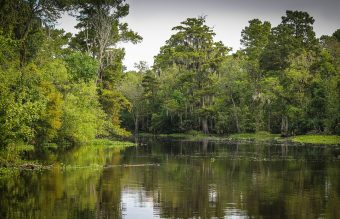
In the mid 20th century, whole cities’ sewage systems safely and successfully used fish to treat and purify their water. Waste-fed fish ponds are a low-tech, cheap, and sustainable alternative to deal with our own shit — and to obtain high protein food in the process.
In countries like Vietnam, Indonesia and China, toilets are often placed above fish ponds. Human and livestock waste may also be collected manually and put in fish ponds.
Why? Stimulated by the added nitrogen, phosphorous, and carbon, algae and phytoplankton grow rapidly and start breaking down the nutrients and bacteria and produce oxygen. As oxygen levels go up, fish are able to swim in the water and eat the algae and phytoplankton. Then the fish are caught and sold on the market.
Finally, when the pond is drained, fish droppings and any remaining sediments can also be used to fertilize surrounding crops, like rice or fruit trees.
More:
The city of Kolkata (formerly Calcutta), India—population 14.8 million—has the largest sewage-fed aquaculture system in the world. Though farmers had been using sewage to feed fish in different ways since the 19th century, the system became more developed starting in the 1940s.

The Kolkata fish farms provide 8.000 tons of fish per year to the city, or 40 percent of the region’s fish production. It processes 80 percent of the city’s sewage, and reduces the nutrient and organic loads of the city’s sewage water by 50-90 percent, while keeping bacterial loads to an acceptable level under WHO guidelines.
Like in China, wastewater-fed fish ponds have a long but unappreciated history in Europe.
Castle moats, monasteries, and villages often had wastewater-fed fish ponds. Over 90 sewage fed aquaculture systems existed in Germany in the early 20th century. Up until the 1990s, the city of Munich still processed most of its wastewater through fish farming.
Indeed, Germany has pioneered some of the more detailed and rigorous scientific investigation into the large-scale viability of sewage-fed fish ponds, as early as the 1890s.
You can read whole article HERE.
Source: Low←tech Magazine



